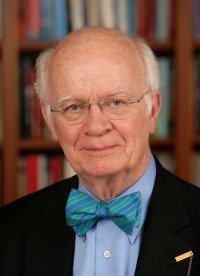Inauthentic but valid
In Lies Across America: What Our Historic Sites Get Wrong James W. Loewen tells us that he encountered a marker at the Little Bighorn River battlefield in Montana dedicated to U.S. Army soldiers killed “while clearing the district . . . of hostile Indians.” He also studied markers dedicated to “patriots” who were actually slave traders or Klansmen racists. Markers long got the Mormon Meadows Massacre dead wrong, intentionally. (The Latter-day Saints have since rectified that.)
It occurs to me that we Christian visitors to holy places—Santiago de Compostela, Loretto and the like—also need to deal with lies and fibs. We Protestants could stand some scrubbing of that famed ink stain in Wittenberg Castle, where Martin Luther did/didn’t throw ink at Satan.
Pilgrimages to the Holy Land sharpen the issue. Almost all revered sites first got identified and connected with presumed biblical-era happenings three or four centuries after the event—as far as we are from the Plymouth Colony pilgrims.
Space permits only one illustration. During a visit to the Holy Land our group was gathered in a cave near Bethlehem. Our Israel-credentialed guide played along with what has to be a fib. “Do you realize you are standing in the very cave where the three Magi stayed on the way to Bethlehem?”
Don’t rank me with the historical-critical folk who think nothing happened back then unless the Jesus Seminar votes that it did. Think of me as an ordinary historian and critic who willingly suspends some measure of disbelief to get a sense of empathy for various pasts, including the biblical, and to connect them with various presents, including both scholarship and piety.
Which leads me to the point that is struggling to be born: We need a category between “authentic” and “lies.” What restored historic site, however much we fuss over it, can truly replicate what was there when the event it commemorates actually happened? Yet the reverence shown by pilgrims to preservations, restorations, re-creations and imaginations does not exactly amount to seduction by lies.
I know that you know that the Bethlehem guide knew that most of his group knew that we cannot know the details about the Magi to which he alluded. So what goes on when those who are not gullible show respect for re-created spaces, as they must when they visit the “Upper Room” or other sites in Jerusalem and the Galilee?
Since 1943 I’ve pondered the following lines from T. S. Eliot’s climactic poem “Little Gidding,” lines about an old chapel:
You are not here to verify,
Instruct yourself, or inform curiosity
Or carry report. You are here to kneel
Where prayer has been valid.
Tell people that St. Christopher never existed, as the post–Vatican II Catholic Church has done, and St. Christopher medals will still dangle from auto mirrors. Prayer has consecrated the walls of old chapels and new churches. We need regard such places neither as “authentic” nor as “lies.”





